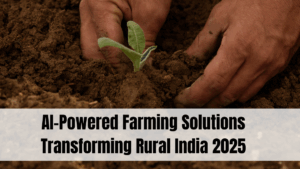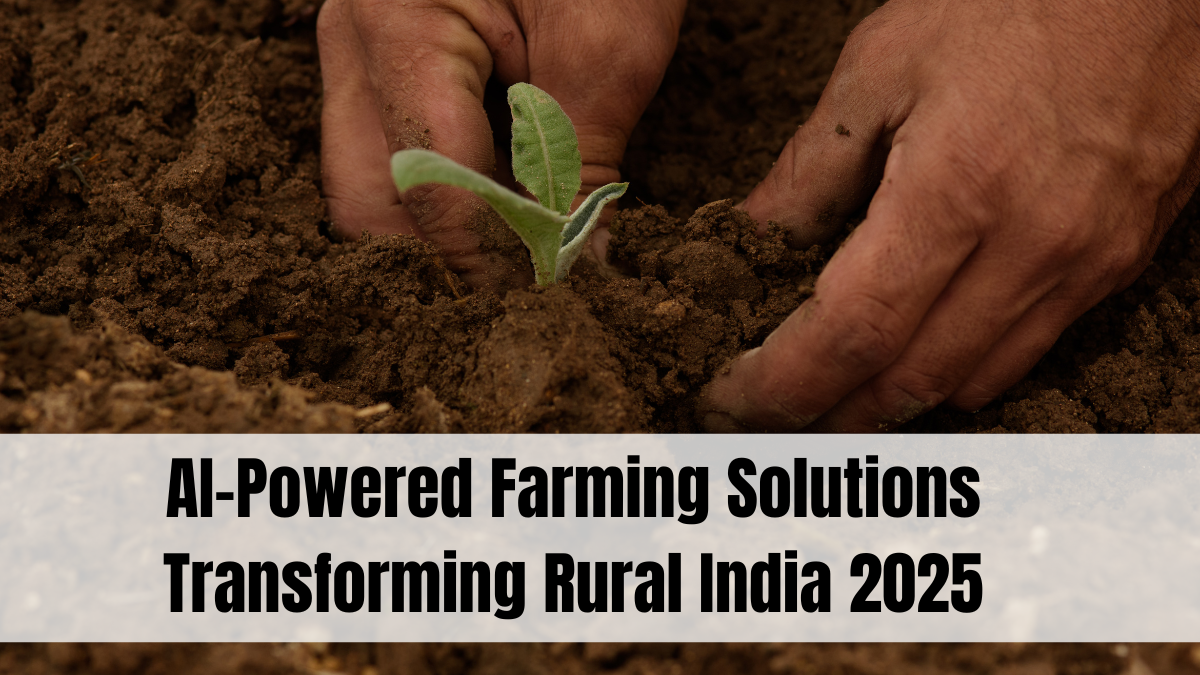Rural agriculture remains the backbone of India’s economy, but challenges like unpredictable weather, resource inefficiency, and lack of access to technology have long impeded productivity. In 2025, ai rural farming solutions 2025 are driving a revolution by leveraging artificial intelligence to empower farmers with data-driven insights, automation, and precision agriculture tools.
This article examines the impact of AI technologies on rural farming, key innovations, government initiatives, and success stories reshaping India’s agricultural landscape.

The Need for AI in Rural Farming
Traditional farming methods in rural India often rely on intuition rather than scientific data. AI solutions help bridge this gap by:
-
Analyzing soil health and moisture levels to optimize irrigation.
-
Predicting weather patterns to plan sowing and harvesting cycles effectively.
-
Monitoring crop health via drone imaging and satellite data.
-
Recommending fertilizers and pesticides precisely, reducing waste and environmental harm.
-
Automating labor-intensive tasks such as sowing and harvesting with robotics.
These capabilities increase yield, reduce costs, and support sustainable farming.
Key AI Technologies Driving Rural Farming Innovation
-
Machine Learning Algorithms: Analyze vast datasets from sensors and historical patterns to provide actionable insights to farmers.
-
IoT Sensors: Installed in fields to continuously monitor soil moisture, nutrient levels, and temperature.
-
Drone Surveillance: AI-powered drones capture multispectral images identifying crop stress, pest attacks, or nutrient deficiencies.
-
Chatbots and Virtual Assistants: Provide farmers with real-time advice, weather alerts, and market prices in local languages.
-
Autonomous Farm Equipment: AI-driven tractors and harvesters reduce labor shortages and improve operational efficiency.
-
Predictive Analytics: Forecast crop yields and risks enabling proactive decision-making.
Together, these technologies modernize farming practices on a large scale.
Government and Private Sector Initiatives Supporting AI Farming
-
The Indian government’s Digital India and Smart Village missions promote AI adoption through funding and training.
-
Startups like CropIn, Fasal, and Stellapps offer AI platforms tailored for rural farmers, focusing on ease of use and regional adaptability.
-
Public-private partnerships deploy AI-enabled irrigation and weather stations across villages.
-
Training programs educate farmers on technology benefits and usage.
-
Subsidies and financial incentives encourage purchase of AI-enabled devices.
These efforts create a supportive ecosystem for AI-driven agriculture.
Success Stories from AI-Enabled Rural Farms
-
A cluster of villages in Maharashtra reported a 20% increase in crop yield using AI soil and weather analysis.
-
Dairy farms in Karnataka use AI to monitor animal health and feeding schedules, improving milk production and quality.
-
AI-guided precision spraying reduced pesticide use by 30% in Punjab farms, lowering costs and environmental impact.
-
Autonomous sowing robots introduced in Andhra Pradesh farms decreased labor requirements by 40%.
These examples demonstrate tangible benefits improving farmer livelihoods.
Challenges and Opportunities Ahead
-
Connectivity Issues: Rural internet access remains a bottleneck for real-time AI applications.
-
Awareness and Training: Many farmers require ongoing education to trust and use AI tools effectively.
-
Cost Barriers: Initial investment in AI devices and services can be high without subsidies.
-
Data Privacy and Security: Protecting farmers’ data in an increasingly digital ecosystem is critical.
Addressing these challenges unlocks vast potential for AI to transform Indian agriculture sustainably.
The Future of AI in Rural Indian Farming
-
Expansion of AI-powered micro-irrigation and water management systems to conserve resources.
-
Greater use of AI in crop insurance and credit risk assessment to improve financial inclusion.
-
Integration of blockchain with AI for transparent supply chain and fair pricing.
-
Development of localized AI models respecting regional languages, crops, and customs.
-
Increased government focus on AI research for climate-resilient agriculture.
AI will be central to India’s goal of doubling farmer incomes by 2030.
FAQs
How does AI help farmers in rural India?
AI provides data-driven insights on weather, soil, pests, and crop management, enabling smarter decisions.
Are AI farming tools affordable for small-scale farmers?
Government subsidies and affordable startup solutions are making AI tools increasingly accessible.
What kind of AI technology is used in Indian farming?
Machine learning, IoT sensors, drones, and chatbots are widely adopted technologies.
Can AI improve water usage in agriculture?
Yes, AI optimizes irrigation schedules reducing water wastage significantly.
Is training required to use AI farming solutions?
Basic training helps farmers maximize benefits and trust AI recommendations.
Click here to know more.
